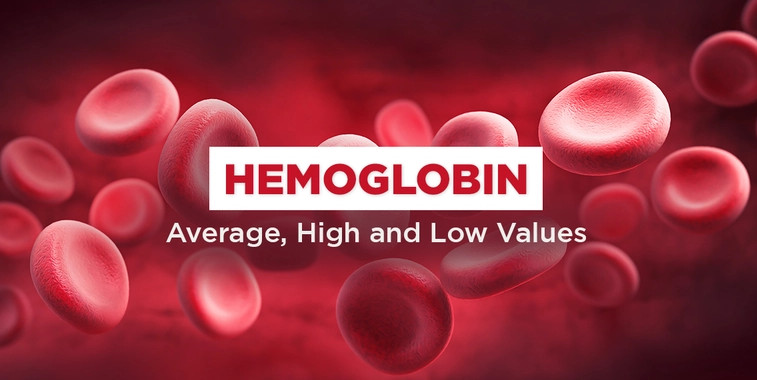What is Hemoglobin
Hemoglobin contains iron atoms and can carry up to four molecules of oxygen. Essentially, hemoglobin acts as a courier, attaching to red blood cells and delivering oxygen to all the tissues in the body, ensuring that every cell receives the oxygen it needs for repair and maintenance.
Apart from its role in oxygen transport, hemoglobin also contributes to the shape of red blood cells, helping them maintain their disc-like shape. This shape is crucial for their smooth movement through blood vessels, ensuring efficient oxygen delivery to all parts of the body.
How are hemoglobin levels tested?
Hemoglobin levels can be evaluated using a blood test.
Medical professionals can assess hemoglobin levels as part of a complete blood count (CBC).
Low blood oxygen levels are correlated with low hemoglobin levels, which can lead to anemia. Hemoglobin, or Hb, is typically expressed in tests as grams per deciliter, or g/dL.
High hemoglobin levels
Elevated hemoglobin levels may indicate a rare blood condition known as polycythemia (Trusted Source). In polycythemia, the body produces an excessive amount of red blood cells, which results in thicker-than-normal blood. Clots, heart attacks, and strokes may result from this. Without treatment, this dangerous, chronic illness has the potential to be lethal.
High hemoglobin levels can also result from dehydration, smokingTrusted Source, or living at high elevations. It might also be an indication of other illnesses, including heart or lung problems.
Understanding Low Hemoglobin Levels: Causes and Types of Anemia
Low (HB) levels often indicate anemia, a condition where the body doesn’t have enough healthy red blood cells to carry oxygen to tissues. There are various types of anemia, each with specific causes:
- Pregnancy-related Anemia: A form of iron deficiency anemia occurring during pregnancy and childbirth due to increased iron demands.
- Vitamin deficiency Anemia Results from low levels of essential nutrients like vitamin B12 or folate in the diet and affects red blood cell formation and function.
- Aplastic Anemia: Stem cell disorder where the immune system attacks bone marrow cells, reducing red blood cell production.
Symptoms of low (HB)
Many symptoms, such as weakness, shortness of breath, dizziness, and a fast or irregular heartbeat, can be caused by low (HB) levels. Cold hands and feet, headaches, and pounding in the ears are some possible symptoms. Low hemoglobin can also cause chest pain and pale or yellow complexion.
These symptoms point to a decreased blood’s ability to carry oxygen, which results in insufficient oxygen reaching all of the body’s tissues. People who have these symptoms should consult a doctor right away since low hemoglobin levels can indicate underlying medical diseases, including anemia or other disorders that influence oxygenation or blood production. To address the underlying causes of low (HB) and restore good health and well-being, early detection and effective management are essential.
Risk factors
Individuals who are elderly or have low iron intake may be more susceptible to anemia.
Those who exercise vigorously are also more vulnerable since stress can cause red blood cells in the blood to break down. An increased risk of anemia may also exist in women who are pregnant or menstruation.
Anemia is more likely to occur in people with chronic illnesses, such as autoimmune diseases, liver disease, thyroid disorders, and inflammatory bowel disease, as they may have decreased (HB) levels.
Conclusion
Low hemoglobin levels, often indicating anemia, can lead to various symptoms like weakness, shortness of breath, and dizziness. It’s important to recognize these signs and seek medical attention for proper diagnosis and treatment. By understanding the importance of (HB) and its role in our health, we can take steps to maintain healthy levels and ensure optimal oxygen delivery to our tissues, promoting overall well-being and vitality.







